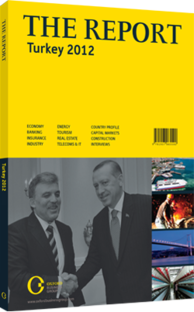So crazy it just might work: A massive canal may one day reshape Istanbul
After two years of secret planning, Prime Minister Recep Tayyip Erdoğan in 2011 revealed his “crazy project”: digging a 50-km-long, 150-metre-wide canal from the Black Sea to the Sea of Marmara. The canal would turn half of Istanbul, a city of some 16m-18m residents, into an island and rival the engineering feats at Suez and Panama.
“We are rolling up our sleeves for what will be one of the greatest projects of the century,” Erdoğan announced on live television in April 2011. The $10bn canal would slice through the western land near Istanbul, creating a means for potentially dangerous cargo to bypass the city’s already very overcrowded and busy Bosphorus Strait.
Supertankers of up to 300,000 deadweight tonnes would be able sail through the canal, which would include enough width for passing lanes and a mooring basin midway to allow simultaneous traffic to proceed in either direction.
Erdoğan’s project highlights Turkey’s indispensable role as a transit route for global energy supplies. Though it has very little natural gas or oil production of its own, its location between the hydrocarbons-rich Middle East and Eurasian regions and the energy-hungry markets of the West make it a key player in the global energy trade. Europe’s fastest-growing population with an economy whose expansion is second in the world only to China’s has spurred record-high demand for energy. A STRAITJACKET: Nowhere is Turkey’s strategic position more apparent than on the Bosphorus, one of the world’s few oil chokepoints. Just 550 metres wide at its narrowest point, the overcrowded strait must be closed in both directions to allow large tankers to pass. Vessels longer than 200 metres – effectively all crude oil and petroleum carriers – are prohibited from transiting at night. Turkish pilots guide roughly 10,000 vessels transporting 150m tonnes of oil and petroleum products through the strait a year. If oil from the Caspian Basin, which has no other maritime outlet into the world’s oceans, doubles to 40m tonnes by 2020, as is expected, then the number of oil tankers in the Bosphorus will also have to double to more than 50 per day.
The winding, crowded strait invites a human, ecological and economic disaster, some have said. “Accidents in the past have turned the Bosphorus into a kind of hell,” Erdoğan said when he announced the Istanbul Canal project. “We are taking this big step to protect Istanbul, which provides 40% of national income, from such large risks, to ensure people’s security and preserve our cultural assets. This canal will finally put an end to all traffic in the Bosphorus.”
A NECESSITY: Besides expediting passage from Black Sea ports to the Mediterranean and doing away with expensive moorage costs on either side of Turkey’s straits, the Istanbul Canal may also open up a new stream of revenue for the government by giving Turkey the right to levy a toll on passing vessels.
Although the Montreux Convention of 1936 granted Turkey control of the Bosphorus and the Dardanelles Strait at the other end of the Marmara Sea, the government is barred from charging fees or hindering free passage during peacetime. These requirements would presumably not apply to any traffic taking place through the canal.
Even some conservationists back the Istanbul Canal. “The current situation is madness and does require a ‘crazy’ solution,” said historian İlber Ortaylı.
“If we are to live in this city in peace, we have no choice but to relocate external, unaccountable traffic to side canals and otherwise.”
The canal is not a new idea. A manmade waterway skirting Istanbul was first proposed by the Ottoman Sultan Süleyman in the early 16th century and was periodically mooted by officials within the imperial court in every century since its first suggestion. Most recently, the late Bülent Ecevit, a former prime minister, put forth a similar idea in 1994, though it did not come anywhere close to fruition.
You have reached the limit of premium articles you can view for free.
Choose from the options below to purchase print or digital editions of our Reports. You can also purchase a website subscription giving you unlimited access to all of our Reports online for 12 months.
If you have already purchased this Report or have a website subscription, please login to continue.

